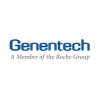
A Study of Ramucirumab Combination Therapy in Japanese Participants Who Have Advanced Stomach Cancer...
Stomach NeoplasmsThe main purpose of this study is to evaluate the safety, tolerability, pharmacokinetics and antitumor response of ramucirumab in combination with platinum/fluoropyrimidine regimens in Japanese participants with advanced gastric/gastrooesophageal junction cancer who have not received chemotherapy.

Effect of H. Pylori Eradication on the Fate of H. Pylori-associated Gastric Polyp
Gastric PolypHelicobacter Pylori InfectionEvaluation of the effect of H. pylori eradication on regression of H. pylori-related gastric polyp (Ranomized controlled trial) Study design: open labeled RCT Study group H. pylori eradication group (N=17), non-eradication group (N=15) Treatment plan Baseline EGD : 0.3-1cm sized polyp - bx & CLO test (antrum & body) ==> if H. pylori positive and eligible patients, randomization Triple therapy UBT (4week after eradication) Follow-up EGD: gross finding, CLO test Evaluation of polyp regression disappear regression over 50% (size, number) no change or increase (size, number)

A Study to Test Combination Treatments in Participants With Advanced Gastric Cancer
Advanced Gastric CancerThe purpose of this study is to evaluate the preliminary efficacy, safety, and tolerability of Nivolumab in combination with Ipilimumab or other treatment therapies in participants with advanced gastric cancer.

Perioperative Chemo and Pembrolizumab in Gastric Cancer
Gastric CancerAdenocarcinoma of the Gastroesophageal JunctionThis is a non-randomized, multi-site, open-label trial of pembrolizumab and chemotherapy in subjects with gastric or gastroesophageal (GE) junction adenocarcinoma. The purpose of this study is to determine and evaluate the efficacy of combination therapy with immune checkpoint blockade and chemotherapy used in the perioperative period in eradicating micrometastatic disease; and to compare paired tissue and serum samples (pre-treatment and post-treatment) from individually treated patients to explore the immune effects of combination therapy and predictors of response.

A Study to Evaluate Rivoceranib Plus Best Supportive Care Compared to Placebo Plus Best Supportive...
Gastric CancerGastric AdenocarcinomaThe purpose of this study is to evaluate the efficacy and safety of rivoceranib plus best supportive care (BSC) compared to placebo plus BSC in participants with advanced or metastatic gastric cancer (GC).

A Study of SHR-1210 in Combination With Capecitabine + Oxaliplatin or Apatinib in Treatment of Advanced...
Gastric CancerGastroEsophageal CancerThe purpose of this trial is to estimate overall response rate (ORR) of SHR-1210 combined with capecitabine and oxaliplatin or with apatinib as first-line treatment in subjects with locally advanced or metastatic gastric or gastroesophageal junction (GEJ) adenocarcinoma.

Fluorouracil, Cisplatin, Leucovorin Calcium, and Cetuximab in Treating Patients With Adenocarcinoma...
Adenocarcinoma of the Gastroesophageal JunctionGastric CancerRATIONALE: Drugs used in chemotherapy, such as fluorouracil, cisplatin, and leucovorin calcium, work in different ways to stop the growth of tumor cells, either by killing the cells or by stopping them from dividing. Monoclonal antibodies, such as cetuximab, can block tumor growth in different ways. Some block the ability of tumor cells to grow and spread. Others find tumor cells and help kill them or carry tumor-killing substances to them. Giving more than one drug (combination chemotherapy) together with cetuximab before surgery may make the tumor smaller and reduce the amount of normal tissue that needs to be removed. Giving these drugs after surgery may kill any tumor cells that remain after surgery. PURPOSE: This phase II trial is studying the side effects of giving fluorouracil, cisplatin, and leucovorin calcium together with cetuximab and to see how well they work in treating patients with adenocarcinoma of the stomach or gastroesophageal junction.

A Study of Ipatasertib (GDC-0068) in Combination With Fluoropyrimidine Plus Oxaliplatin in Participants...
Gastric CancerThis multicenter, randomized, double-blind, placebo-controlled study will evaluate the efficacy of ipatasertib in combination with oxaliplatin, 5-fluorouracil, and leucovorin (modified FOLFOX6 [mFOLFOX6]) chemotherapy in participants with advanced or metastatic gastric or gastroesophageal junction (GEJ) cancer. Participants will be randomized to receive either ipatasertib or placebo orally daily on Days 1 to 7 of each 14-day cycle in combination with mFOLFOX6 on Day 1 of each cycle.

Clinical Study for Energy Based Devices in Open Gastrectomy for Gastric Cancer
Gastric CancerSurgery is the first standard treatment for stomach cancer, but it still has negative factors such as bleeding, leakage, closure, surgery part infection and cardiovascular and lung complication by general anesthesia. electric cautery is used extensively in surgery room due to the utility of simultaneous severance and hemostasis. In some case, the electric current from vitality electrode may unexpectedly stimulate or damage nearby muscles and nerves. Ultrasonically activated shears (UAS) is a device to transform the protein of organ for organ incision or hemostasis. General advantages possibly include shortened operating time, decrease of operative blood loss, and relatively less damages to the normal organ. UAS is commonly used in the operation room, which is now considered as a secure and useful medical device for for tissue dissection and coagulation. Also, it is expected to lower the risk of surgery by reducing operating time and blood loss. However, clinical evidence is not sufficient for this device until now. Therefore, in this study, Evaluate the utility, efficacy, and safety of energy based device, in the case of open gastrectomy Would like to compare the following two kinds of energy based devices. A. For conventional monopolar electrosurgery group : dissection and sealing will be conducted by conventional monopolar electrocautery device B. For UAS group : dissection and sealing will be conducted by UAS

Surgical Technique, Open Versus Minimally-invasive Gastrectomy After CHemotherapy
Gastric CancerLaparoscopic surgery has been shown to provide important advantages in comparison with open procedures in the treatment of several malignant diseases, such as less peri-operative blood loss, faster patient recovery and shorter hospital stay. All while maintaining similar results with regard to tumour resection margin and oncological survival. In gastric cancer the role of laparoscopic surgery remains unclear. Current recommended treatment for gastric cancer consists of radical resection of the stomach, combined with lymfadenectomy. The extent of lymfadenectomy is considered a marker for radicality of surgery and quality of care. Therefore, It is imperative that a new surgical technique should be non-inferior with regard to radicality and lymph node yield. Preliminary studies show promising results for laparoscopic gastrectomy, but the number of studies is small and due to lower incidence of gastric cancer in the West they are often underpowered. A prospective randomised clinical trial is indicated in order to establish the optimal surgical technique in gastric cancer: open versus minimally invasive gastrectomy. Results of the STOMACH trial will further aid in determining the optimal surgical technique in patients with gastric cancer.
